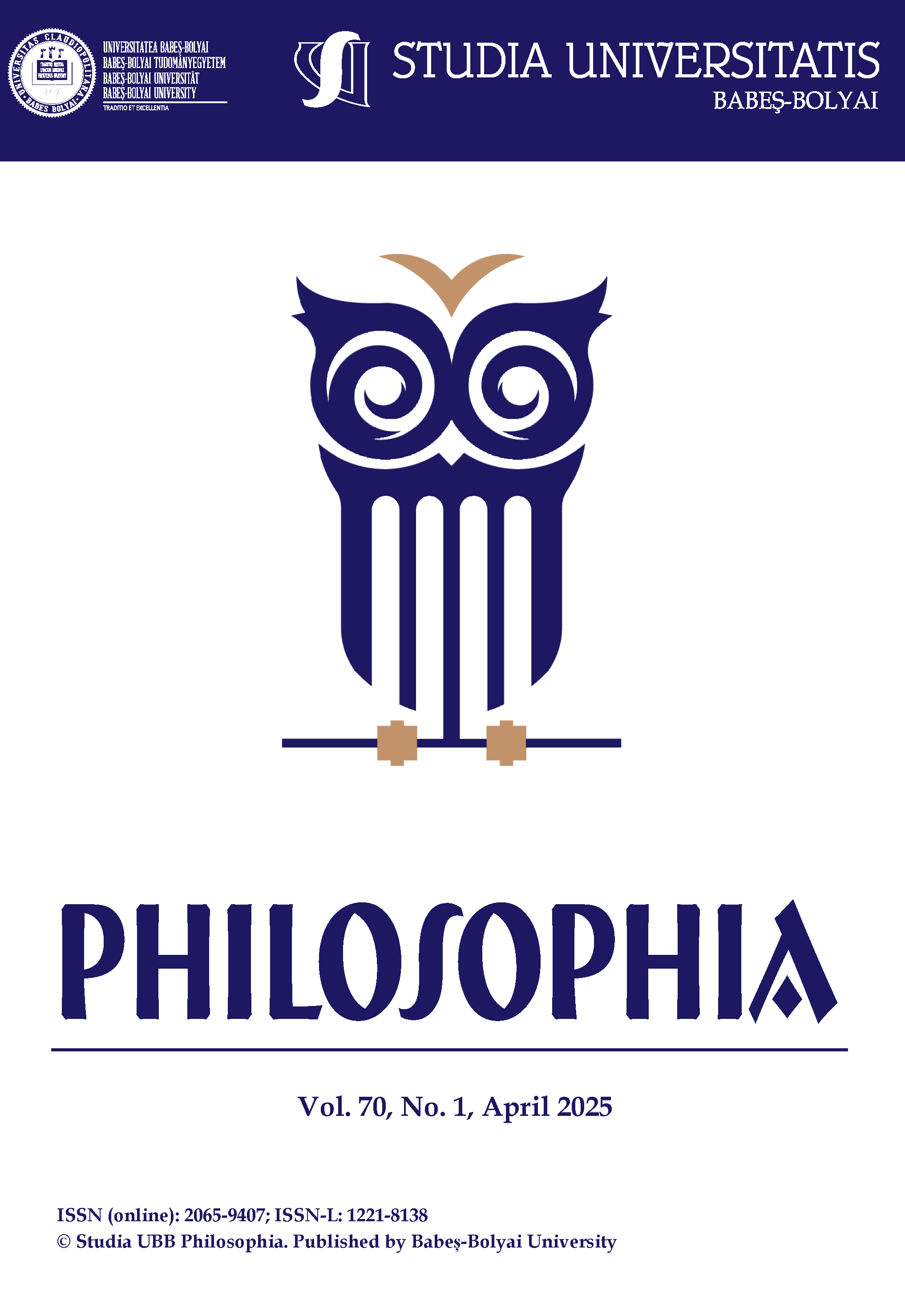Ecoexistentialism in Caspar David Friedrich Works: An Analysis from the Perspective of Recent Cognitive Science Discoveries
DOI:
https://doi.org/10.24193/subbphil.2025.1.06Keywords:
Ecoexistentialism, Caspar David Friedrich, Cognitive science, nature, art, experiential selfAbstract
With this paper, I propose an interpretation of Caspar David Friedrich’s works on the 250th anniversary of his birth. Known as a romantic painter, Friedrich explored and cultivated our deep relationship with nature through his art. From the perspective of recent discoveries in the cognitive sciences, I will analyse the ingenuity of the techniques by which, using the vast and open landscape, but also the characters represented with their backs, the artist creates the right context in which the viewer has the feeling of dissolving his self in nature, the experience of identification with the elements around and above all, the living of the present sensation, through the cleavage of the self and the activation of the experiential self. In the works of Caspar David Friedrich, I identify aspects related to existentialism and, above all, a prefiguration of immersive art that generates such existential experiences about nature.
References
Amstutz Nicole, Caspar David Friedrich: Nature and the Self, Yale University Press, 2020.
Berdan Alice, “Caspar David Friedrich and the 20th Century,” Ibid., Volume 9, 2016.
Bratman Gregory N., Paul J. Hamilton, Scott K. Hahn and Jesse L. W. Daily, “Nature experience reduces rumination and subgenual prefrontal cortex activation,” Proceedings of the National Academy of Sciences, No. 112 / 2015, 8567–8572.
Cappellen V. Philippe and Vassilis Saroglou, “Awe Activates Religious and Spiritual Feelings and Behavioral Intentions,” Psychology of Religion and Spirituality, No. 4, 2012, 223-236.
Dambrun Matthieu, “When the dissolution of perceived body boundaries elicits happiness: The effect of selflessness induced by a body scan meditation,” Consciousness and Cognition, No. 46, 2016, 89–98.
Haladyn Julian Jason, “Friedrich’s ‘Wanderer’: Paradox of the Modern Subject,” RACAR: Revue d’art Canadienne. Canadian Art Review, No. 41(1), 2016, 47–61, pp. 49.
Hartig Terry, Agnes E. van den Berg, Christer M. Hagerhall, Michal Tomalak, Niclas Bauer, Rainer Hansmann, Aino Ojala, Eleni Syngollitou, Grazia Carrus, Anne Van Herzele, Sarah Bell, Marco T. C. Podesta and Guro Waaseth, “Health benefits of nature experience: Psychological, social and cultural processes,” in K. Nilsson, M. Sangster, C. Gallis, T. Hartig, S. De Vries, K. Seeland, and J. Schipperijn (Eds.), Forests, Trees and Human Health, Springer Science Business and Media, 2011.
Hofmann Werner, Caspar David Friedrich, Thames & Hudson, 2000.
James Thrall Soby, The Early Chirico, Dodd, Mead & Company, 1941.
Jensen Jens Christian, Caspar David Friedrich: Life and Work, Barron’s Education Series, Inc., 1981.
Kahneman Daniele, Thinking, Fast and Slow, Farrar, Straus and Giroux, 2011.
Keltner Dacher and Haidt Jonathan, “Approaching awe, a moral, spiritual, and aesthetic emotion,” Cognition and Emotion, No. 17, 2003, 297–314.
Piff K. Paul, Paul Dietze, Michael Feinberg, David M. Stancato and Dacher Keltner, “Awe, the small self, and prosocial behavior,” Journal of Personality and Social Psychology, No. 108, 2015, 883–899.
Shiota N. Mina, Dacher Keltner and Amanda Mossman, “The nature of awe: Elicitors, appraisals, and effects on self-concept,” Cognition & Emotion, No. 21, 2007, 944–963.
Ten Brink, Pieternella, Keren Mutafoglu, Jan P. Schweitzer, Miia Kettunen, Chris Twigger-Ross, James Baker and Steven Dekker. “The health and social benefits of nature and biodiversity protection,” A report for the European Commission (ENV. B. 3/ETU/2014/0039), London/Brussels: Institute for European Environmental Policy, 2016.
Van Rompay, Tessa and Tom Jol. “Wild and free: Unpredictability and spaciousness as predictors of creative performance,” Journal of Environmental Psychology, No. 48, 2016, 140–149.
Van Rompay Tessa and Oran S, Mark Galetzka and Agnes E. van den Berg, “Lose yourself: Spacious nature and the connected self,” Journal of Environmental Psychology, No. 91, 2023, 1–10.
William Vaughan, Börsch-Supan, Helmut and Neidhardt Hans Joachim, Caspar Friedrich 1774-1840: Romantic Landscape Painting in Dresden, Tate Gallery, 1972.
Yaden Daniel, Scott Barry Kaufman, Emma Hyde, Andrea Chirico, Alberto Gaggioli, J. W. Zhang and Dacher Keltner. “The development of the awe experience scale (AWE-S): A multifactorial measure for a complex emotion,” The Journal of Positive Psychology, No. 14, 2018, 474–488.
Downloads
Published
How to Cite
Issue
Section
License
Copyright (c) 2025 Studia Universitatis Babeș-Bolyai Philosophia

This work is licensed under a Creative Commons Attribution-NonCommercial-NoDerivatives 4.0 International License.



